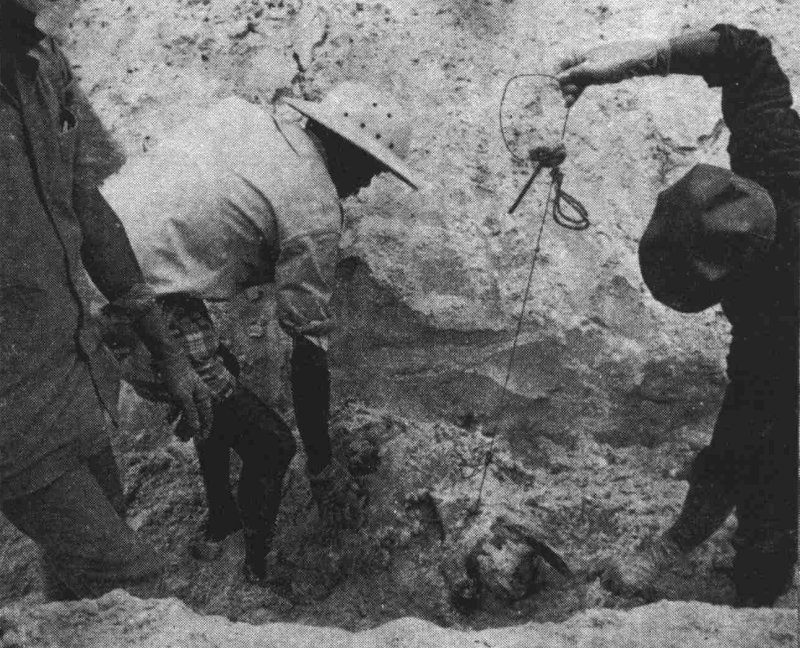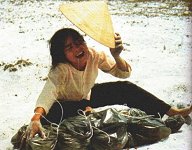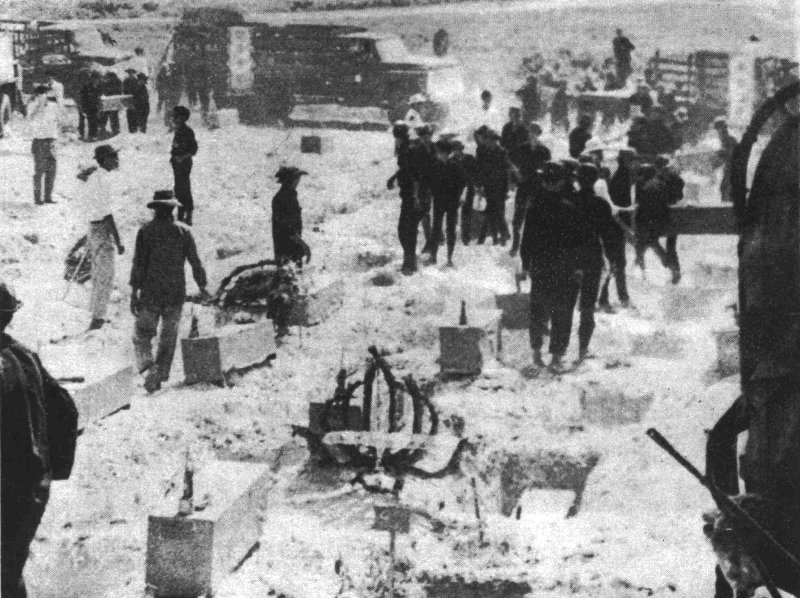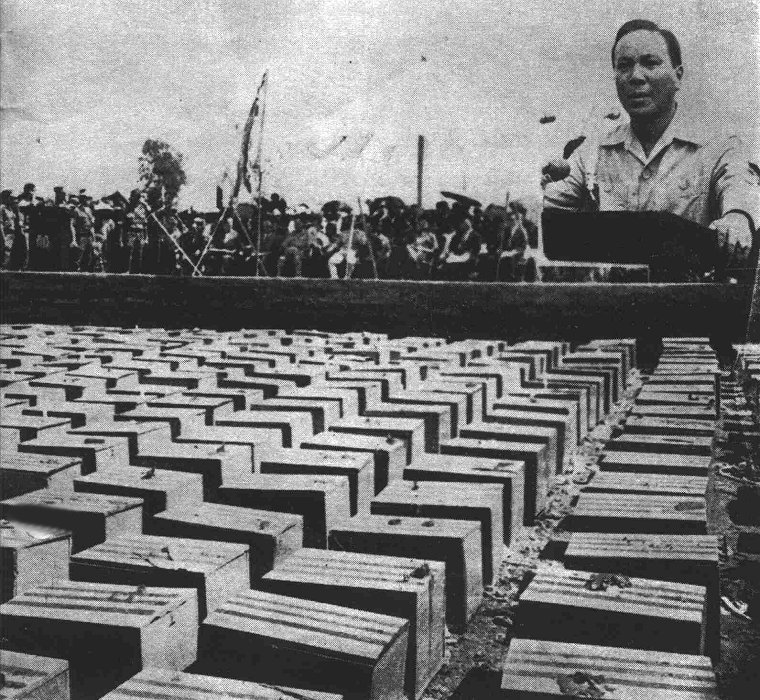On Vietnamization
By Rick Simonson Monday, November 18, 2013
 No doubt, most (American) Vietnam
combat veterans, recall the ARVN (Army
of the Republic of Vietnam, or the South
Vietnamese army) as corrupt, lazy and
unwilling to fight.
No doubt, most (American) Vietnam
combat veterans, recall the ARVN (Army
of the Republic of Vietnam, or the South
Vietnamese army) as corrupt, lazy and
unwilling to fight.
I vividly recall the sight of ARVN M-16s held over several ARVN troops’ shoulders, one hand on the barrel and the other holding their buddy's hand. Our tracks were lined up six abreast as we rolled slowly behind this company of ARVN troops who looked like they were on a picnic.
Our platoon was following a fresh, heavily traveled trail that the roan plows uncovered. Most of the battalion was guarding the roan plow ops from strategic locations in or near a Michelin rubber plantation. An NVA division was known to have moved into that area during the previous few days.
On the intercom, our platoon
discussed whether or not to shoot
through the ARVN if the NVA popped
up and these ‘picnickers’ didn’t get out of the way. Lucky, I guess, we didn’t find anything significant that day. We didn't have to decide between them and us. It’s one less bad memory to keep me awake at night.
By Rick Simonson Monday, November 18, 2013
 No doubt, most (American) Vietnam
combat veterans, recall the ARVN (Army
of the Republic of Vietnam, or the South
Vietnamese army) as corrupt, lazy and
unwilling to fight.
No doubt, most (American) Vietnam
combat veterans, recall the ARVN (Army
of the Republic of Vietnam, or the South
Vietnamese army) as corrupt, lazy and
unwilling to fight. I vividly recall the sight of ARVN M-16s held over several ARVN troops’ shoulders, one hand on the barrel and the other holding their buddy's hand. Our tracks were lined up six abreast as we rolled slowly behind this company of ARVN troops who looked like they were on a picnic.
Our platoon was following a fresh, heavily traveled trail that the roan plows uncovered. Most of the battalion was guarding the roan plow ops from strategic locations in or near a Michelin rubber plantation. An NVA division was known to have moved into that area during the previous few days.
 |
| Yes I know, this is not 6 abreast. |
discussed whether or not to shoot
through the ARVN if the NVA popped
up and these ‘picnickers’ didn’t get out of the way. Lucky, I guess, we didn’t find anything significant that day. We didn't have to decide between them and us. It’s one less bad memory to keep me awake at night.
As it turns out, the ARVN simply lacked proper
motivation.
According to all reports the corruption they were known for in the press didn’t go away, but the Americans were doing just that ... going away. Entire divisions were being redeployed, either home or to Europe.
Once the ARVN soldiers realized the Americans were indeed going to go home, the South Vietnamese realized they had a choice between fighting and becoming communist.
So believe it or not, about 1970 or '71 depending on the unit, the ARVN troops for the most part became properly motivated. They actually did form themselves into a moderately disciplined fighting force by 1972.
The defeat of the NVA’s 1972 Spring Offensive demonstrates this. During one discussion, I heard a voice object to the use of the term “defeat” so perhaps a more accurate way to say it is ... the decimation of the North Vietnamese Army during the 1972 Spring Offensive demonstrates that the
motivation.
According to all reports the corruption they were known for in the press didn’t go away, but the Americans were doing just that ... going away. Entire divisions were being redeployed, either home or to Europe.
Once the ARVN soldiers realized the Americans were indeed going to go home, the South Vietnamese realized they had a choice between fighting and becoming communist.
So believe it or not, about 1970 or '71 depending on the unit, the ARVN troops for the most part became properly motivated. They actually did form themselves into a moderately disciplined fighting force by 1972.
The defeat of the NVA’s 1972 Spring Offensive demonstrates this. During one discussion, I heard a voice object to the use of the term “defeat” so perhaps a more accurate way to say it is ... the decimation of the North Vietnamese Army during the 1972 Spring Offensive demonstrates that the
ARVN could fight if properly motivated.
Besides being driven back to their starting point, (give or take) the North Vietnamese lost 100,000 KIA compared to the ARVN’s loss of 25,000.
Were there setbacks? Yes. Did the ARVN have trouble overcoming the enemy? Of course they did. Twenty-five thousand KIA, that’s some darn heavy fighting.
Besides being driven back to their starting point, (give or take) the North Vietnamese lost 100,000 KIA compared to the ARVN’s loss of 25,000.
Were there setbacks? Yes. Did the ARVN have trouble overcoming the enemy? Of course they did. Twenty-five thousand KIA, that’s some darn heavy fighting.
Glad I wasn’t there for that one.
Someone else said “with American air power” ... yes and with South Vietnamese air power. We the Americans fight with
American air power, too ... so that’s not really a relevant issue.
What happened in 1975?
The fall of Saigon is a long story that includes corruption, paranoia and politicians with unsound agendas. I will save that for a different chapter (also see PS below).
But just because Saigon fell two years later does not mean the ARVN was not ready when we left in 1973. It was.
The U.S. accomplished its objective for sending combat troops to Vietnam.
When Kissinger signed the peace treaty in 1973 it was because the main U.S. objectives for sending combat troops to Vietnam were accomplished. That is ... to shore up the South Vietnamese government, to train and build the ARVN until they became a viable fighting force.
That happened.
Vietnamization was the main strategy that accomplished the task. When the ARVN completed their takeover of the war in 1972, they were a well-equipped 1.1 million-man army that demonstrated in combat their capability to repel a full-fledged invasion.
The fact that the media claimed Vietnamization to be a failure is a concrete demonstration of the way in which the media tweaked some facts and ignored many others to fool us into believing their defeatist rhetoric.
Positive news was ignored or twisted to appear negative.
What happened in 1975?
The fall of Saigon is a long story that includes corruption, paranoia and politicians with unsound agendas. I will save that for a different chapter (also see PS below).
But just because Saigon fell two years later does not mean the ARVN was not ready when we left in 1973. It was.
The U.S. accomplished its objective for sending combat troops to Vietnam.
When Kissinger signed the peace treaty in 1973 it was because the main U.S. objectives for sending combat troops to Vietnam were accomplished. That is ... to shore up the South Vietnamese government, to train and build the ARVN until they became a viable fighting force.
That happened.
Vietnamization was the main strategy that accomplished the task. When the ARVN completed their takeover of the war in 1972, they were a well-equipped 1.1 million-man army that demonstrated in combat their capability to repel a full-fledged invasion.
The fact that the media claimed Vietnamization to be a failure is a concrete demonstration of the way in which the media tweaked some facts and ignored many others to fool us into believing their defeatist rhetoric.
Positive news was ignored or twisted to appear negative.
Negative news was overemphasized. No one objected to the media’s
version of history, so that’s the version that went into the history books. To
be fair they did not have access to as much information then. We now have
myriad of sources to draw upon. In hindsight we have the ability to get far
superior data. But the media did have access to enough information if they
were willing to pay attention. But they were hung up on their antiwar agenda and either did not or chose not to pay attention.
Ladies and Gentlemen, U.S. soldiers did not loose that war. The U.S. media lost that war, or at least they made a significant contribution to the loss. The writings of the Communist players are full of their bragging about how they manipulated the U.S. media to their own ends.
 Perhaps there should be a monument to Walter Cronkite in Hanoi.
Perhaps there should be a monument to Walter Cronkite in Hanoi.
The 58,178 brave American soldiers who died during the Vietnam War do not deserve to have their names tainted with a defeat they did not earn. They fought bravely and the Allies were winning when the Paris Accords were signed ...
Ladies and Gentlemen, U.S. soldiers did not loose that war. The U.S. media lost that war, or at least they made a significant contribution to the loss. The writings of the Communist players are full of their bragging about how they manipulated the U.S. media to their own ends.
 Perhaps there should be a monument to Walter Cronkite in Hanoi.
Perhaps there should be a monument to Walter Cronkite in Hanoi.The 58,178 brave American soldiers who died during the Vietnam War do not deserve to have their names tainted with a defeat they did not earn. They fought bravely and the Allies were winning when the Paris Accords were signed ...
A peace treaty is supposed to be the end of a war. The fact that both the North and South Vietnamese broke the treaty numerous times after the Paris Accords were signed, has no effect (or shouldn't have) on the valiant sacrifice of these brave men.
Early in the War, the North was adamant that there would be no peace treaty. The North signed the Paris Accords because they were losing and they knew it.
The treaty was their only salvation. They didn’t admit it, of course. That was
part of their strategy. But the Communists were losing and they knew it.
General Gaip admitted it many years later.
The fall of Saigon, came almost 3 years after the U.S. combat forces left the theater. Other than civilian contractors acting as military and logistics advisers, American troops played no part in defending South Vietnam in the 1975 invasion.
It is time to set the record straight. Those names on the Wall demand accuracy in our history books. Stop the lies and squelch the myths. The South Vietnamese lost the Vietnam War, not the U.S. ... Especially not the U.S. soldiers.
PS:
You can blame Congress for not passing the emergency funding in time to save Saigon if you like. But when Saigon fell, there were still millions of unused dollars in the South Vietnamese Government’s U.S. bank accounts.
It wasn’t the lack of funds that caused Saigon to fall...
General Gaip admitted it many years later.
The fall of Saigon, came almost 3 years after the U.S. combat forces left the theater. Other than civilian contractors acting as military and logistics advisers, American troops played no part in defending South Vietnam in the 1975 invasion.
It is time to set the record straight. Those names on the Wall demand accuracy in our history books. Stop the lies and squelch the myths. The South Vietnamese lost the Vietnam War, not the U.S. ... Especially not the U.S. soldiers.
PS:
You can blame Congress for not passing the emergency funding in time to save Saigon if you like. But when Saigon fell, there were still millions of unused dollars in the South Vietnamese Government’s U.S. bank accounts.
It wasn’t the lack of funds that caused Saigon to fall...
















